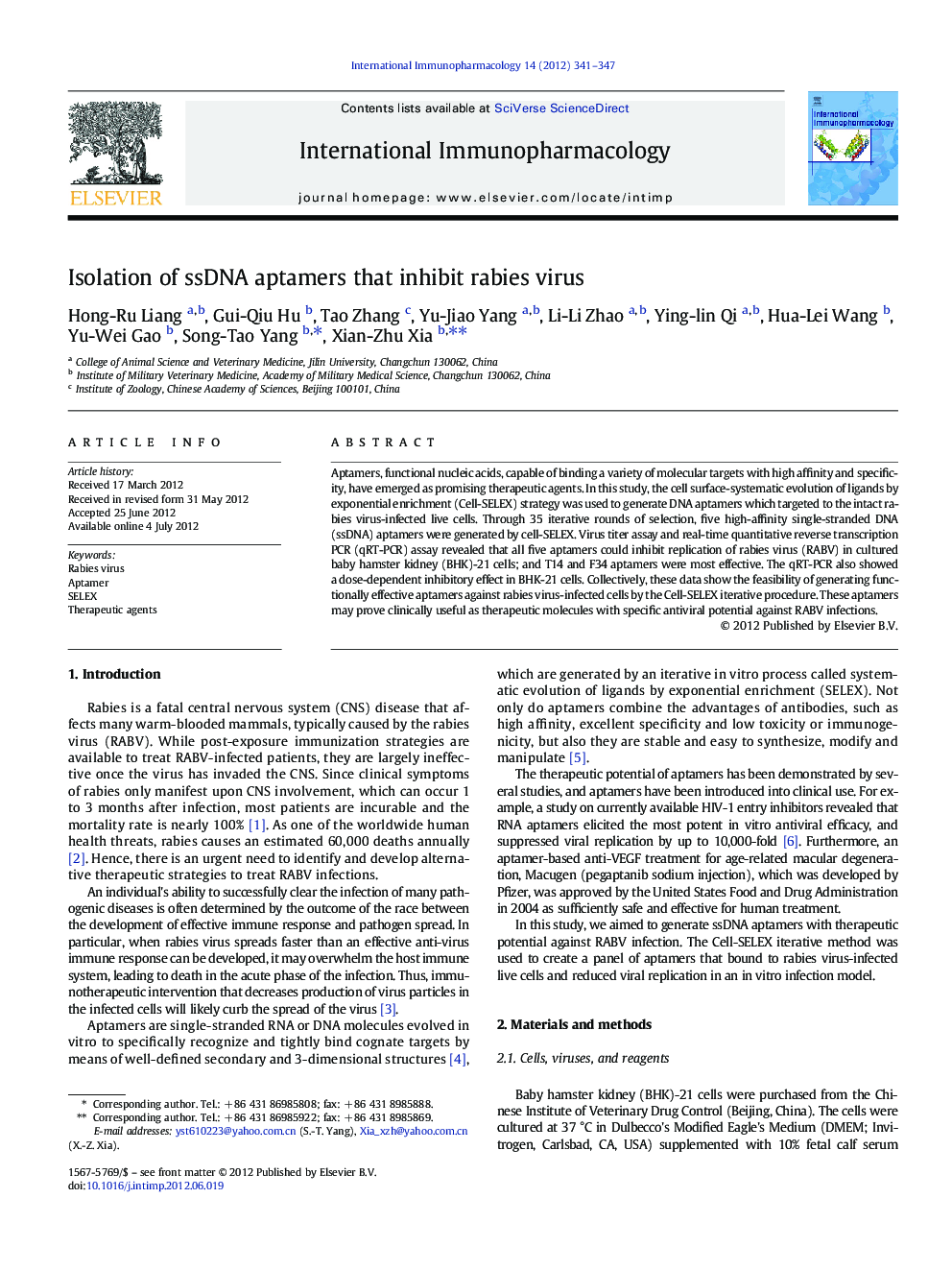| Article ID | Journal | Published Year | Pages | File Type |
|---|---|---|---|---|
| 2540962 | International Immunopharmacology | 2012 | 7 Pages |
Aptamers, functional nucleic acids, capable of binding a variety of molecular targets with high affinity and specificity, have emerged as promising therapeutic agents. In this study, the cell surface-systematic evolution of ligands by exponential enrichment (Cell-SELEX) strategy was used to generate DNA aptamers which targeted to the intact rabies virus-infected live cells. Through 35 iterative rounds of selection, five high-affinity single-stranded DNA (ssDNA) aptamers were generated by cell-SELEX. Virus titer assay and real-time quantitative reverse transcription PCR (qRT-PCR) assay revealed that all five aptamers could inhibit replication of rabies virus (RABV) in cultured baby hamster kidney (BHK)-21 cells; and T14 and F34 aptamers were most effective. The qRT-PCR also showed a dose-dependent inhibitory effect in BHK-21 cells. Collectively, these data show the feasibility of generating functionally effective aptamers against rabies virus-infected cells by the Cell-SELEX iterative procedure. These aptamers may prove clinically useful as therapeutic molecules with specific antiviral potential against RABV infections.
Graphical abstractFigure optionsDownload full-size imageDownload as PowerPoint slideHighlights► We determined the optimal time for Cell-SELEX processing. ► We used Cell-SELEX strategy to generate DNA aptamers. ► DNA aptamers targeting intact rabies virus-infected live cells ► Selected aptamers could inhibit replication of rabies virus in cells. ► F34 aptamer has potential for use as a therapeutic agent against rabies virus.
